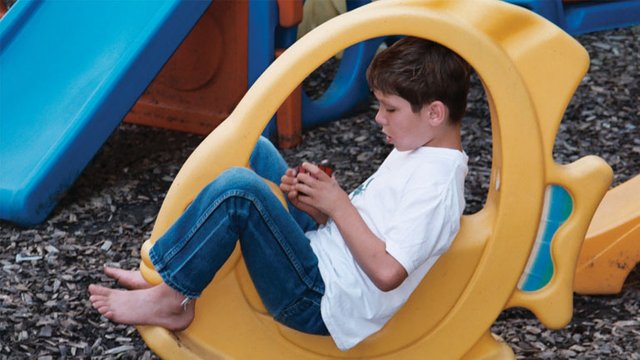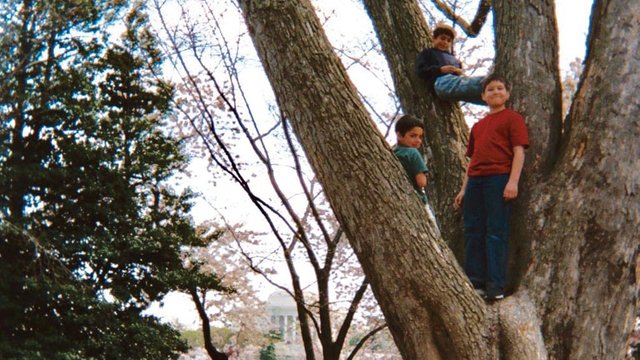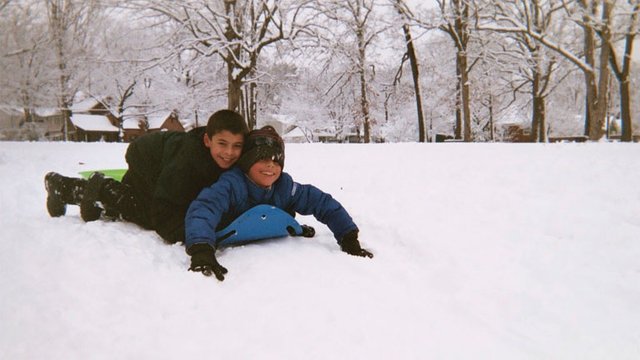Raising Troubled Children in Cohousing

Excerpted from the Fall 2019 edition of Communities, “The Shadow Side of Cooperation”—full issue available for download (by voluntary donation) here.

Social workers brought my son, his bike, and all his worldly belongings to my home one February evening in 2004. He was almost 9, but he and I had never met.
Seven months later, my next-door neighbor returned from Ukraine with his sons, two brothers aged 7 and 9. My neighbor and his sons barely knew each other, having met for the first time the year before when children from the orphanage were brought to the US for a short visit.
This article focuses on the most significant ways our three adopted boys’ behavior affected our cohousing community and how we worked jointly to deal with the impact.
Adoption at Takoma Village
Although our group didn’t set this as an intention, adoption has figured prominently in the life of Takoma Village, a cohousing community of 43 households in Washington, DC. We’ve been a multigenerational community since the first members moved in during the fall of 2000, with residents ranging in age from infants to octogenarians. Usually, our numbers include around 65 adults and 15 children.
Eleven of the kids who’ve lived at Takoma Village over the years have been adoptees. Several were adopted as infants or toddlers and joined their families from China, India, and the US foster care system. Some—like a former resident’s three boys, my son, and my neighbor’s two boys—were older, adopted during their elementary-school years from foster care or Eastern Europe.
The three oldest boys moved away in 2007, when they were teens. During the years they lived at Takoma Village, they engaged in a variety of behaviors that were disruptive to the community, including fighting, lying, stealing, and bringing troublesome peers on site. Several years later, many of their experiences were echoed by my son and my neighbor’s sons. At times, our own boys turned on each other with unrestrained aggression, engaged in destructive rages at home that sometimes spilled out into the community, and stole sweets and treats from the common house.
Despite our children’s challenging behavior, my son and my neighbor’s sons were friendly and helpful most of the time and participated regularly in events in the community. They joined in during cookouts and parties, worked alongside us and other adults on work days, and willingly carried packages or ran errands for neighbors. They engaged appropriately with other kids in the community and conversed comfortably with adults. As a result, there was a reservoir of goodwill toward our boys that helped the community weather the transgressions that occurred as they grew up.

Common House Challenges
In most cohousing communities, the common house is a building that provides shared space for group meals, meetings, parties, watching TV, doing laundry, and a variety of other activities. At Takoma Village, the common house is viewed as an extension of our homes. As a result, it served as a convenient place for our kids to escape to. Many times, my son walked out of our house rather than face me being upset with him or the consequences of a mistake he’d made. The other boys did the same.
As frustrating as their avoidance was, we came to see that—most of the time—the common house provided a safe refuge where they could calm down before returning home. Far better for them to retreat to the community’s common house than to roam the streets or run away from home.
On the other hand, the televisions and computer in the common house presented compelling temptations on many occasions. Our children struggled academically and socially. TV shows, video games, and YouTube had a hypnotic effect that allowed them to escape the constant stress they felt. They yearned for more access to these devices and the opportunity to escape mentally and numb themselves.
In middle school, my son started to skip school and hang out in the common house, watching TV in the living room or playing games on the office computer. Hoping to block his access to these resources, I sent an email asking the community to agree to keep specific rooms in the common house locked until the crisis passed.
There were strong objections from one member. In emails, she made clear that she wanted the living room doors unlocked so the common house would be open and inviting. She wrote that she objected to having to carry a key. Beyond her personal preferences for the common house to feel and be open, she raised thought-provoking questions about what lessons were being taught by locking the rooms and shared her belief that this approach was not “helpful for the socialization of children or the social life of the community.” She suggested that the adults who observed my son in the common house during school hours approach him about his behavior. Ultimately, she said, she didn’t want to “live under the control of a recalcitrant child.”
Her perspective had merit, and had I not been the overwhelmed parent struggling with my child’s truancy, academic struggles, and other problematic behaviors, I might have welcomed a philosophical back-and-forth about parenting approaches. One member sent an email noting that raising a child in a traditional community was not quite like raising a child in cohousing today. Most who responded agreed that the abundance of electronic devices available created a challenging environment for contemporary parents. Others wanted to avoid being in the position of confronting a child who was not their own. Support for locking the rooms was strong. Those who joined the email exchange wanted to defer to my request and provide the support I asked for.
The issue was not brought to a membership meeting, and no firm agreement was reached. Most people locked the rooms. My son, his school, and I eventually worked through the immediate crisis, and I emailed to let my neighbors know the common house could return to its previous state. Several years later, the father of adopted twins made the same request after his boys started skipping homework and disappearing from playdates to sit in front of the television. The same objections were raised, but most people locked the rooms until the boys began to follow their father’s rules once again.
Home Break-ins and Thefts
The biggest challenge we faced in the community occurred over a period of several years. One boy’s compulsion to view sexually explicit material prompted him to break into a number of homes within the community and steal keys, cell phones, iPads, and laptop computers in order to have unfiltered access to the internet. He also picked the locks or pried open doors in the common house that led to rooms with televisions and computers inside.
Around puberty, the boy began trying to circumvent his father’s restrictions on electronic devices in their home. Over the next couple of years, his efforts became increasingly sophisticated as he stole his father’s keys, repeatedly broke into a locked file cabinet, and hacked into their home computers in order to bypass administrator passwords.
At age 14, the boy began entering neighbors’ homes if he found the deadbolt unlocked or a window unsecured. Occasionally he took small amounts of cash, which he spent on candy and junk food. Often, he stole keys to the common house office, where he could access the computer there. But primarily, he entered others’ homes so he could view online pornography on computers that had no parental controls set or stole cell phones or iPads for the same reason.
In some cases, residents and their children were in another part of the home when the boy entered without permission. If they encountered each other, the boy fled. The startled parties usually responded with a mixture of anger and fear. The home intrusions were traumatizing, creating a sense of violation and triggering anxieties about safety and security in neighbors’ own homes.
After a series of break-ins, one community member emailed to urge the community’s support for the family, despite the fact that her home had been entered. She wrote, “My heart goes out to [him]. Whatever experiences he had early in life continue to haunt him in ways that I can only imagine. My heart goes out to [his father]. How exhausting and disheartening this whole thing has been and continues to be.”
To make sure everyone was aware of the risks, the boy’s father spoke openly about the situation at membership meetings and shared information with the community in emails. He urged people not to set their phones, computers, and tablets down in common areas, even briefly, and to be sure they had strong passwords on their devices to prevent unauthorized use. Neighbors were reminded to secure their doors and windows, a precaution many ignored. He pledged to provide as much direct supervision as possible when the boy was home, but also asked for support in monitoring his son’s whereabouts.
An effort was also made to engage the boy in a restorative justice circle designed to help him understand the impact of his behavior on his relationships and move toward a reconciliation. Trained facilitators worked to enable a dialogue between the boy and those who had been victimized, but it was too much for him to bear, and he fled the room. The facilitators then helped the adults air their concerns and identify reparations the boy later carried out, such as helping fold others’ laundry.
The break-ins abated, but two years later a resurgence of home intrusions occurred. The boy’s father decided that the boy—now 16 years old—needed to understand more directly the real-life consequences of his behaviors. At his urging, neighbors reluctantly called the police on several occasions over the next months. The police were unable to make an arrest because of insufficient evidence, but officers trained in dealing with troubled youth had serious conversations with the boy.
When an arrest was finally made, the boy’s case was successfully diverted to a system designed for juveniles with mental health issues, and his arrest record was eventually expunged.
The Potential for Sexual Abuse
While the boy’s interest in sexual material seemed age-appropriate, his willingness to go to such lengths to access it suggested more deep-seated psychological struggles. My next-door neighbor and I, both psychotherapists, recognized that children who’ve been traumatized sometimes have a compulsion to reenact the trauma in an effort to make sense of their experience. Both singly and jointly with other parents of adopted children, we urged the community to be mindful of the potential risk.
Through repeated emails and at membership meetings, we communicated our concerns. We noted that there were many things we didn't know about our boys’ histories. It was obvious they had trouble managing their angry impulses as children, and we cautioned that they might also have trouble controlling their sexual impulses at puberty. For the well-being of all the kids in the community, we recommended that younger children of either gender not be left alone with our boys. When new residents moved into the community, I met with them personally to alert them to the risk and advise them of the precautions members were urged to take.

Conclusion
Any child can experience emotional and behavioral challenges, but such challenges are common for children adopted after infancy. Older kids who have been removed from their birth families have often experienced years of neglect and deprivation, witnessed and been subjected to violence and abuse, and learned maladaptive behaviors modeled by their caretakers.
Children’s traumatic histories have a profound impact on their ability to trust and feel safe, communicate their feelings and needs, and manage their emotions. In addition, children from such backgrounds have often been exposed in utero to alcohol and other brain-altering substances, which can affect their ability to learn. They are often delayed in their emotional and social development, behaving in ways that belie their chronological age.
None of us fully realized what was ahead when we adopted older children. When the challenges manifested themselves, we sought out psychotherapy and other therapeutic resources, worked closely with our children’s schools, and accessed other services to help our kids heal and thrive.
As much as possible in dealing with our children’s actions, we sought to avoid involving them in the juvenile justice system or having them placed outside of our homes in residential treatment facilities. Taking such steps is common among adoptive families without the extensive support network we had in our cohousing community. Although we explored these options at times, we believed those steps would have been traumatizing to our children and experienced as punishment for behaviors they often didn’t understand themselves.
As one member noted in an email, “Only in cohousing would actions such as breaking into a unit and stealing receive so much compassion and understanding. In a typical condominium, the police would have been called and (possibly) a juvenile arrest made. Makes me grateful to live here. What amazes me is our community’s ability to see far beyond behavior issues and reach out to help a troubled child.”
When the boys’ behavior began to impact the larger community, we found it was essential to communicate openly about it. Although it was embarrassing and opened up the possibility we would be judged or criticized, we realized neighbors needed to know what was going on, what efforts were being pursued to address the problematic behaviors, and what they could do to help if they were willing. Over the years we posted numerous emails, scheduled time for discussion in membership meetings, and participated in face-to-face conversations to share our struggles, hear from our neighbors, and identify a path forward.
Today our boys are young adults in their early 20s. All of them graduated from high school. My son works full-time in the hospitality industry. My neighbor’s sons work in a retail store and at a break-dancing studio. Two of the boys are in long-term relationships and live with their partners. Like most adults, the boys struggle at times, but they are respectful and responsible young men who treat others with compassion and care. They are evidence that cohousing is a wonderful place to raise troubled children.
Alicia J. George is a single mom and a psychotherapist in private practice in Washington, DC. She has been a member of Takoma Village Cohousing since it was built nearly 20 years ago. Excerpted from the Fall 2019 edition of Communities, “The Shadow Side of Cooperation”—full issue available for download (by voluntary donation) here.
Excerpted from the Fall 2019 edition of Communities, “The Shadow Side of Cooperation”—full issue available for download (by voluntary donation) here.

Posted from my blog with SteemPress : https://www.ic.org/raising-troubled-children-in-cohousing/